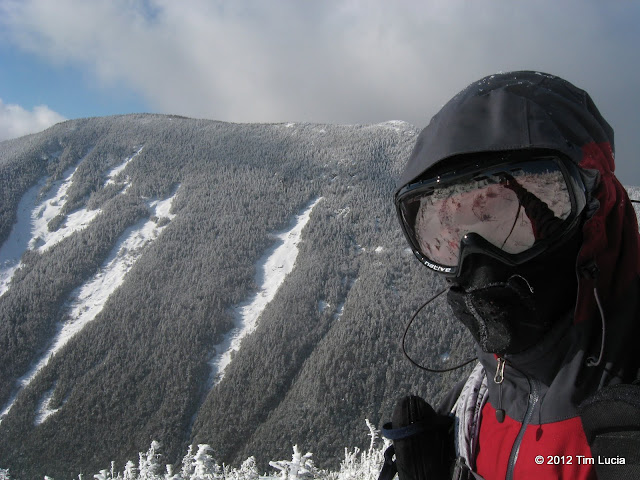DayTrip
Well-known member
- Joined
- May 13, 2013
- Messages
- 3,924
- Reaction score
- 213
I've been hiking in my older ski goggles for years now (haven't done much winter hiking until recently) and I really do not like the pair I currently have so I've been searching for a better option. I will be spending significant amounts of time above treeline this year and don't think my current pair will perform very well. Curious everyone's opinion on the below particulars. Most of the previous threads I pulled up on VFTT are pretty old.
1)Wide field of vision. Goggle design appears to have changed a lot over the past few years with every brand advertising the widest peripheral vision. I've read that a larger goggle can be less likely to fog (which is a major issue with my current pair). Also, I have trouble looking DOWN with my current pair to grab at buckles, change traction options, etc. The frame gets in the way and with multiple layers of clothing my chin bottoms out on my chest sooner, restricting how far I can cock my head to see down. So I want a bigger lense. Anyone feel one brand is better than the other for widest range of vision, particularly looking down? I'm wondering if single lens googles would be thinner and thus allow for easier viewing down but then there is the fogging trade off. The fogging and looking down problem are probably my two biggest concerns right now. Two weeks ago I did Lowes Path and had a lot of issues seeing while switching from spikes to crampons and eventually had to take my goggles off to see what I was doing. And of course the goggles then fogged up.
2)Photochromic lenses. The idea of one lens handling all of the lighting conditions seems like a huge plus for hiking with the variable conditions. Never used this type of lens before in optics though. Does it work as advertised? They are generally significantly more expensive and I seem to remember reading something about them not working as well in cold weather. True?
3)Stores With Best Selection To Try On. I've been researching models on Backcountry.com, which has a massive selection, but I really would prefer to try them on first. Can anyone recommend a well stocked retailer, ski shop, etc in the Worcester MA, Providence RI or North Conway, NH area? There used to be a little shop in downtown North Conway (forgot the name - got my last pair there) with a pretty good selection. I would likely be shopping near my house in CT/RI though.
4)Dual lenses. I've read all the prior posts about cat crap and various anti-fogging strategies. Do dual lenses really not fog/fog much less often? Sounds like most goggles now have an anti-fog coating already so cat-crap and other products would not be needed? Are there any other design features that would help minimize fogging? (And I've already read numerous articles about techniques/tips to prevent fogging. I'm looking specifically for product design features here like the style of venting, etc).
Appreciate the feedback as always.
1)Wide field of vision. Goggle design appears to have changed a lot over the past few years with every brand advertising the widest peripheral vision. I've read that a larger goggle can be less likely to fog (which is a major issue with my current pair). Also, I have trouble looking DOWN with my current pair to grab at buckles, change traction options, etc. The frame gets in the way and with multiple layers of clothing my chin bottoms out on my chest sooner, restricting how far I can cock my head to see down. So I want a bigger lense. Anyone feel one brand is better than the other for widest range of vision, particularly looking down? I'm wondering if single lens googles would be thinner and thus allow for easier viewing down but then there is the fogging trade off. The fogging and looking down problem are probably my two biggest concerns right now. Two weeks ago I did Lowes Path and had a lot of issues seeing while switching from spikes to crampons and eventually had to take my goggles off to see what I was doing. And of course the goggles then fogged up.
2)Photochromic lenses. The idea of one lens handling all of the lighting conditions seems like a huge plus for hiking with the variable conditions. Never used this type of lens before in optics though. Does it work as advertised? They are generally significantly more expensive and I seem to remember reading something about them not working as well in cold weather. True?
3)Stores With Best Selection To Try On. I've been researching models on Backcountry.com, which has a massive selection, but I really would prefer to try them on first. Can anyone recommend a well stocked retailer, ski shop, etc in the Worcester MA, Providence RI or North Conway, NH area? There used to be a little shop in downtown North Conway (forgot the name - got my last pair there) with a pretty good selection. I would likely be shopping near my house in CT/RI though.
4)Dual lenses. I've read all the prior posts about cat crap and various anti-fogging strategies. Do dual lenses really not fog/fog much less often? Sounds like most goggles now have an anti-fog coating already so cat-crap and other products would not be needed? Are there any other design features that would help minimize fogging? (And I've already read numerous articles about techniques/tips to prevent fogging. I'm looking specifically for product design features here like the style of venting, etc).
Appreciate the feedback as always.

